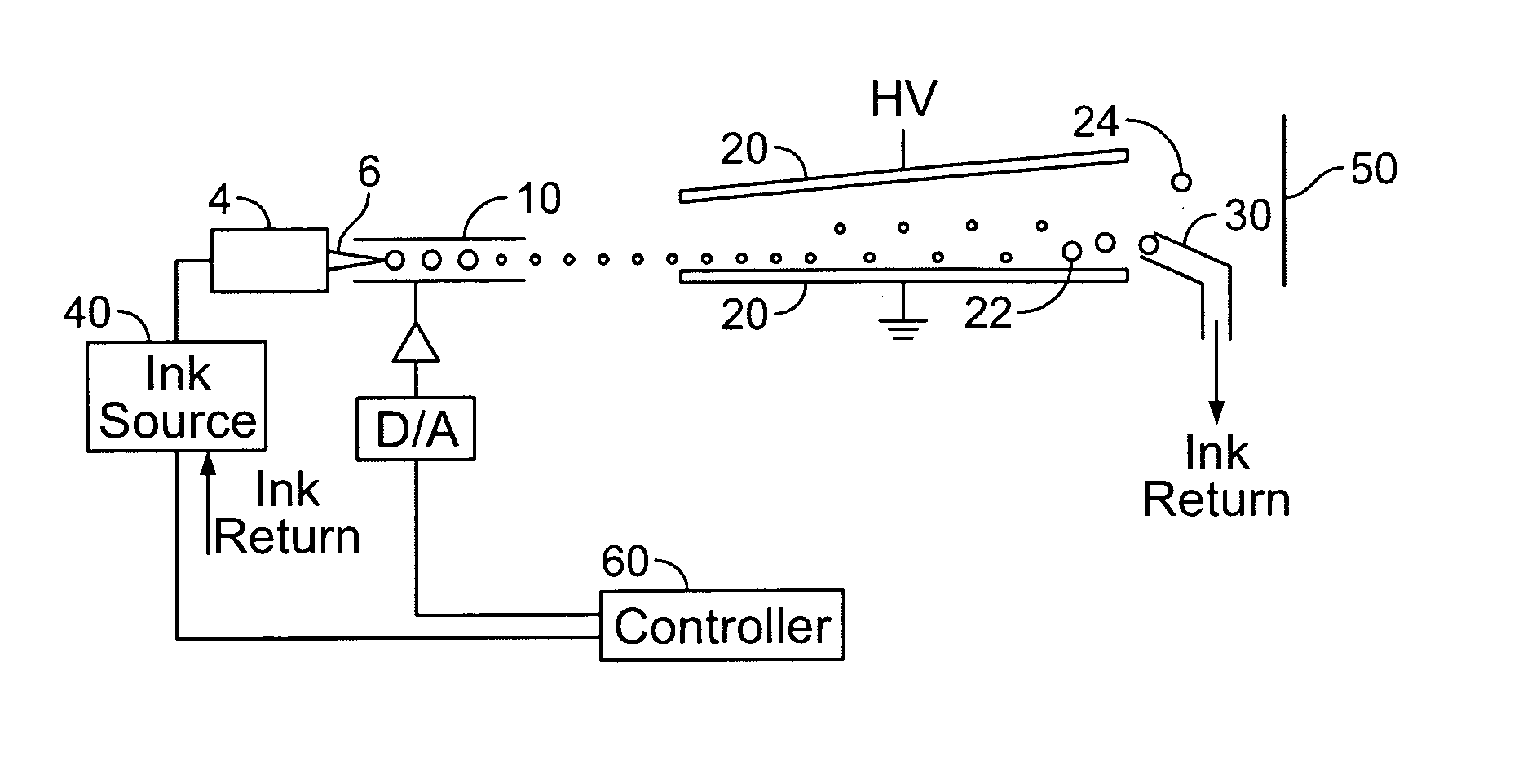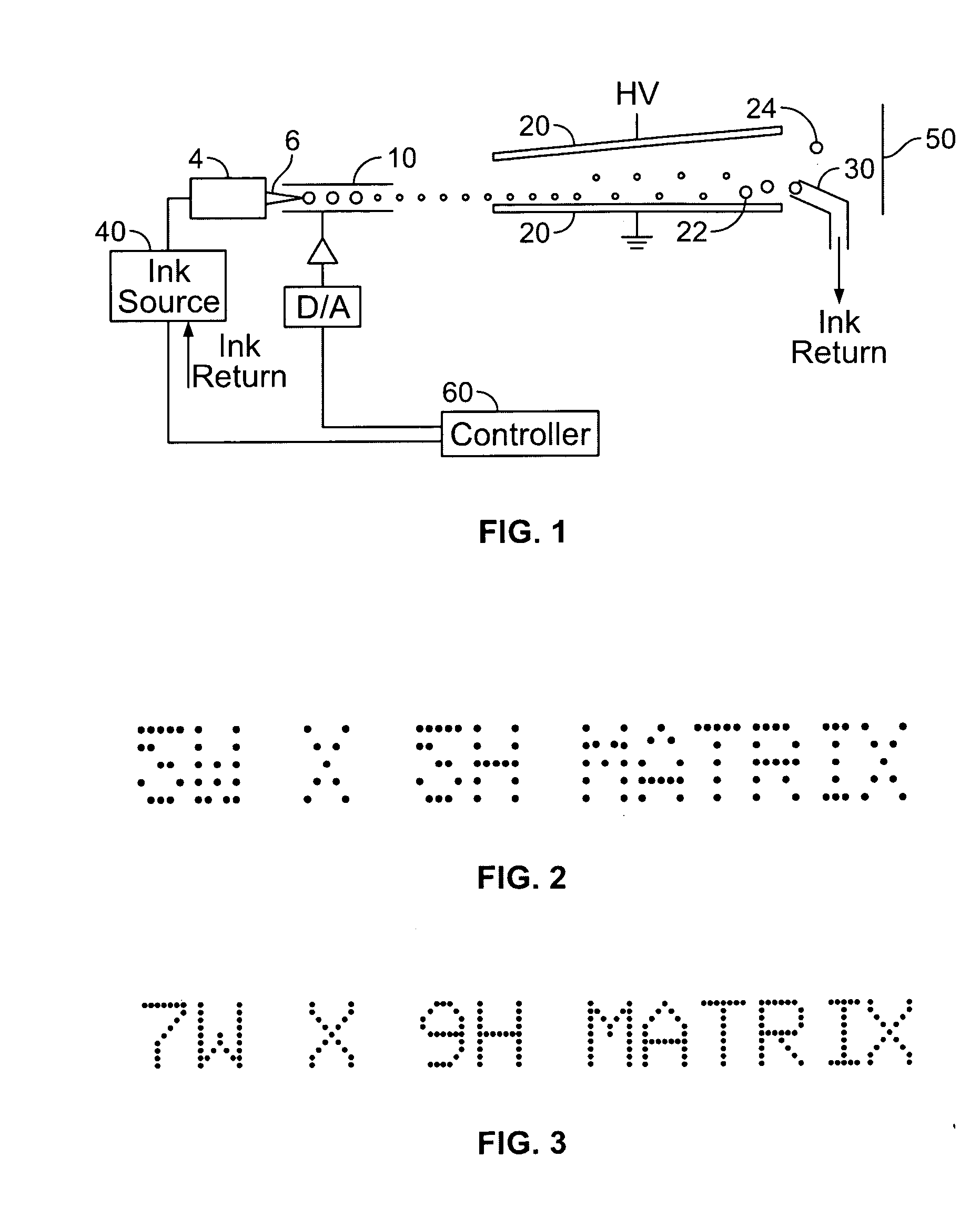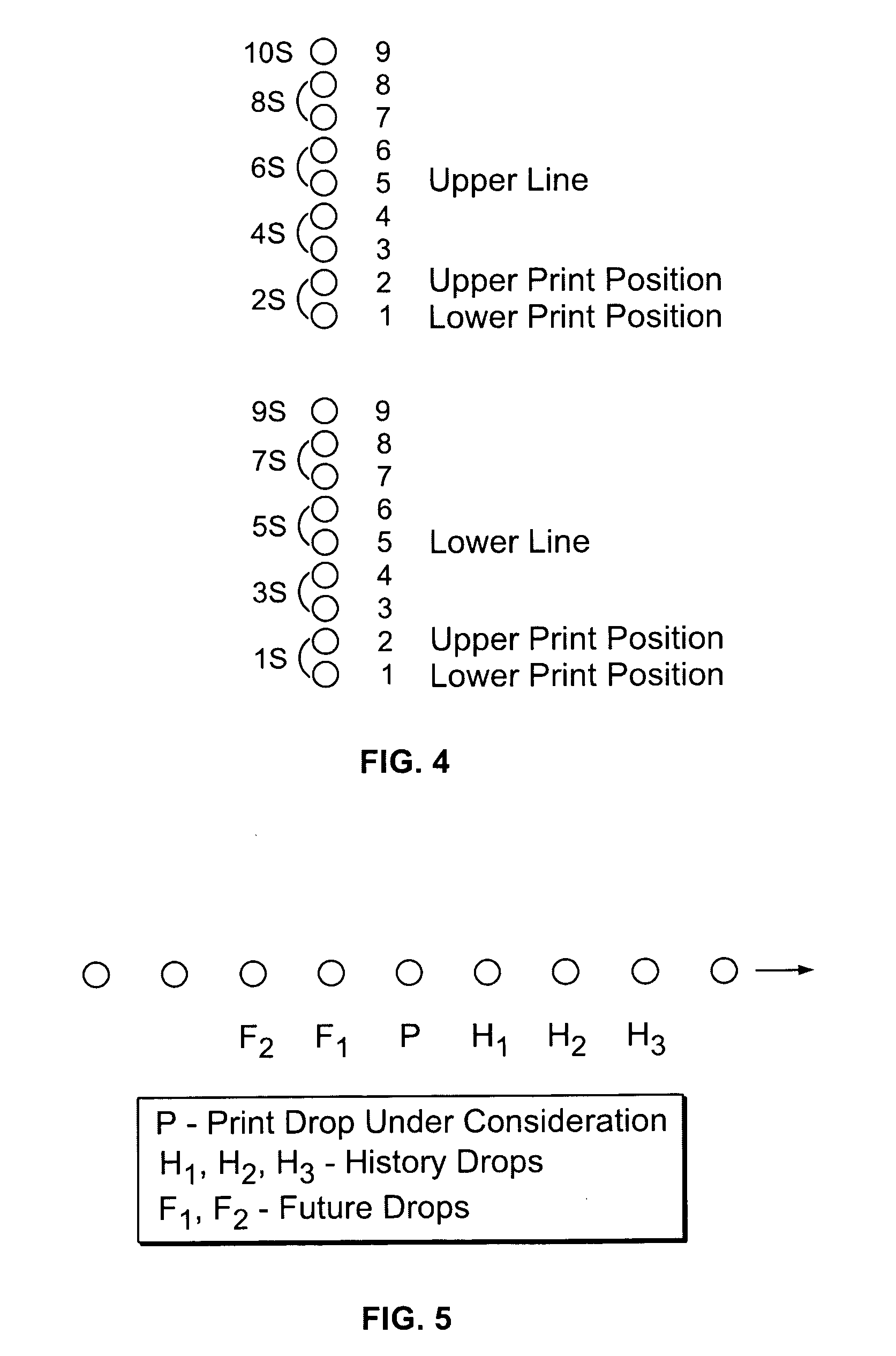System and method for auto-threshold adjustment for phasing
- Summary
- Abstract
- Description
- Claims
- Application Information
AI Technical Summary
Problems solved by technology
Method used
Image
Examples
Embodiment Construction
[0024] According to an embodiment shown in FIG. 1, a continuous ink jet printer 1 includes a print head with a drop generator 4 which receives ink from an ink source 40. The drop generator incorporates a piezoelectric oscillator which creates perturbations in the ink flow at a nozzle 6. Regular sized and spaced drops are accordingly emitted from the nozzle. The drops pass through a charging tunnel 10, where a different charge can be applied to each drop. This charge determines the degree of deflection as the drop passes between a pair of deflection plates 20 between which a substantially constant electric field is maintained. Uncharged or slightly charged drops 22 pass substantially undeflected to a catcher 30, and are recycled to ink source 40. Charged drops 24 are projected toward a substrate 50 and are deflected so as to have a trajectory striking the latter which moves past the print head in the horizontal direction. The level of charge applied to the drop controls its vertical ...
PUM
 Login to View More
Login to View More Abstract
Description
Claims
Application Information
 Login to View More
Login to View More - R&D
- Intellectual Property
- Life Sciences
- Materials
- Tech Scout
- Unparalleled Data Quality
- Higher Quality Content
- 60% Fewer Hallucinations
Browse by: Latest US Patents, China's latest patents, Technical Efficacy Thesaurus, Application Domain, Technology Topic, Popular Technical Reports.
© 2025 PatSnap. All rights reserved.Legal|Privacy policy|Modern Slavery Act Transparency Statement|Sitemap|About US| Contact US: help@patsnap.com



